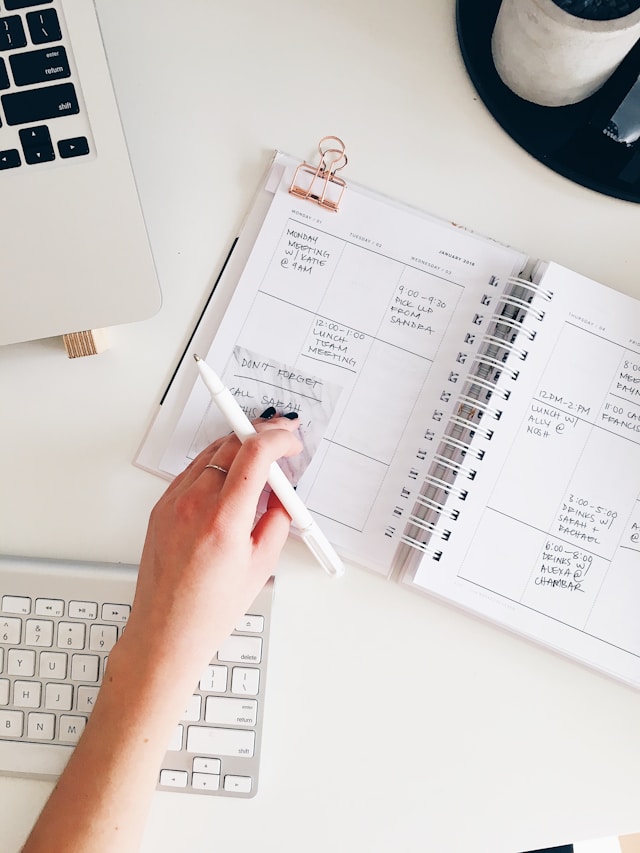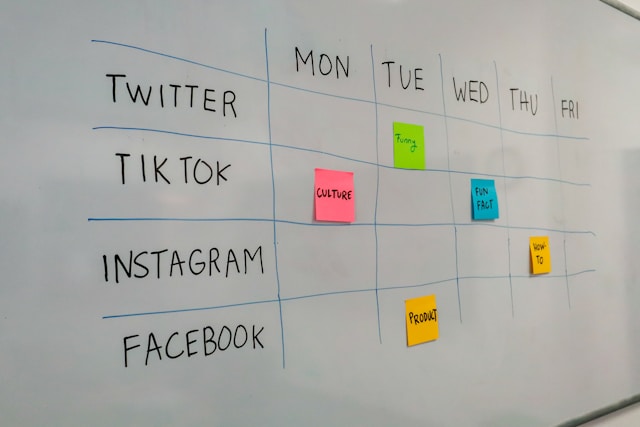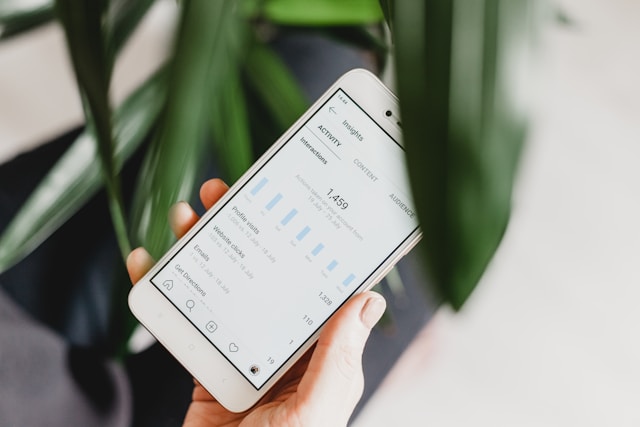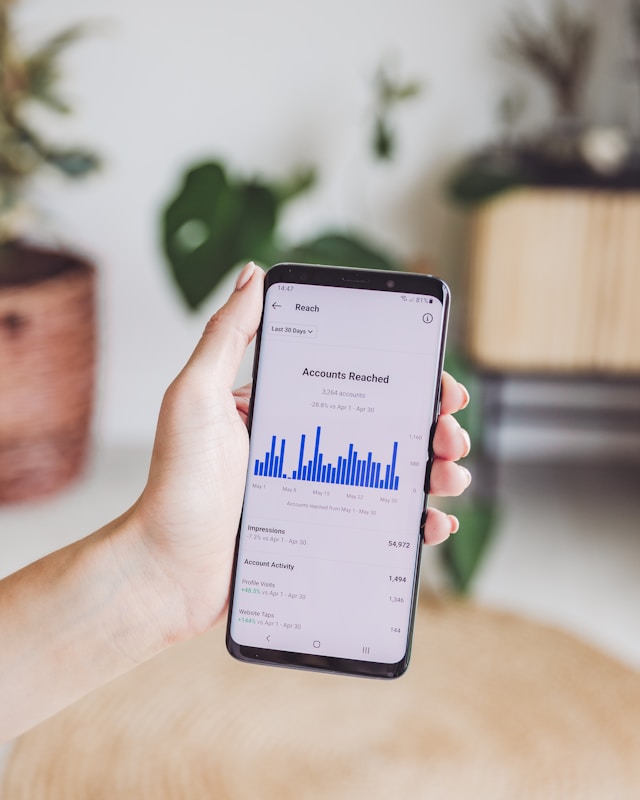In today’s digital age, Instagram is a powerful tool for growing your brand. But to succeed, you need a plan in place. An Instagram content plan helps you stay consistent and engage your audience effectively. It ensures your posts align with your brand’s voice and goals. Without a content plan, your posts can feel random and disjointed.
Planning your content in advance saves time and reduces stress. It allows you to focus on creating high-quality posts and improve your overall marketing. This leads to better engagement and more followers.
Whether you’re a business or an influencer, a content plan is essential. It’s your roadmap to success on the platform. If you’re ready to buy IG followers and grow your brand, keep reading and create a winning Instagram content plan.

What Is a Content Plan for Instagram?
A content plan for Instagram is your strategic roadmap for posting on the platform. It outlines what content you will post and when you will post it. This plan helps ensure your Instagram profile stays active and engaging.
With a content plan, you can better manage your Instagram posts and stories. It involves planning, creating, and scheduling content in advance to ensure consistency and alignment with your brand’s goals. This structured approach helps maintain a cohesive aesthetic and message, making your profile more appealing to followers.
A content plan is essential for anyone serious about growing their following. It keeps you organized and focused on your goals. Start planning your content today to see better results and more engagement.

Why Have a Content Plan for Instagram?
A content plan for Instagram is crucial for several reasons.
Here’s a look at a few.
Brand Consistency
It ensures brand consistency. When your posts follow a cohesive style, your brand becomes more recognizable, which helps build trust with your audience.
Audience Engagement
A content plan enhances audience engagement. Regularly posting quality content keeps your followers interested. Engaged followers are more likely to like, comment, and share your posts. This interaction boosts your visibility on Instagram.
Marketing Effectiveness
It improves overall marketing effectiveness. Planning content around marketing campaigns ensures your posts support your business goals. You can align your content with product launches, promotions, and events. This can even help you make your business stand out from competitors on Instagram.
Diversified Content
You can plan a mix of photos, videos, stories, and user-generated content. Variety keeps your audience engaged and interested. It shows different sides of your brand and keeps your feed dynamic.
Time Saving
With a content calendar, you can schedule posts in advance. This reduces the daily pressure of creating content. You can focus more on engaging with your audience and less on last-minute posting.
Performance Tracking
A well-structured plan also helps you track performance. Use Instagram’s analytics to see which posts perform best. This data allows you to adjust your strategy and improve your results.
Staying Relevant
Planning content in advance helps you stay relevant. You can prepare posts for holidays, trends, and special events. This proactive approach ensures your content is timely and engaging.
In essence, a content plan helps you set and achieve goals. Define what you want to accomplish with your Instagram account. Whether it’s increasing followers, driving website traffic, or boosting sales, a plan helps you stay focused. Start planning your Instagram content today for better results and a stronger online presence.

How To Plan Instagram Content
Planning Instagram content involves several key steps. Each step is designed to help you stay organized.
Here’s how to plan your Instagram content.
1. Define Your Goals
Figure out what you want to achieve with your Instagram account. Goals might include increasing followers, boosting engagement, or promoting a product. Clear goals better guide your content creation process.
2. Know Your Audience
Understand who you are trying to reach with your posts. Research their interests, behaviors, and pain points. This knowledge helps you create content that resonates with them. There are around 2 billion Instagram users, according to Statista, so there are more than enough people who can engage with your content.
3. Decide on Content Themes
Your themes are the main topics your posts will cover. Common themes include behind-the-scenes looks, product shots, and user-generated content. Sticking to a few core themes keeps your content focused.
4. Create a Content Calendar
A content calendar helps you plan and schedule your posts in advance. This tool ensures you maintain a consistent posting schedule. It also allows you to plan content for special events and holidays.
5. Plan Your Content
When planning your content, consider variety. Mix up your posts with photos, videos, stories, and carousels. This variety will keep your audience engaged and interested and show different sides of your brand.
6. Create High-Quality Content
High-quality visuals are crucial for Instagram. Invest time in creating eye-catching photos and videos. Use tools like Canva or Lightroom to enhance your images. Quality content attracts more followers and boosts engagement.
7. Craft Compelling Captions
Your captions should be engaging, informative, and reflective of your brand voice. Use relevant hashtags to increase your content’s reach. Hashtags help new users discover your posts.
8. Use Tools & Analytics
Monitor your performance using Instagram’s analytics to track which posts perform best. Analyze this data to refine your content strategy. Adjust your plan based on what works and what doesn’t.

Instagram Content Plan Template
Creating an Instagram content plan template can simplify your planning process. A template helps you stay organized and consistent.
Here’s what a basic template should include.
1. Content Goals
Define specific and measurable goals for your Instagram account.
Examples:
- Increase followers by 20% in three months.
- Boost engagement rate to 10% per post.
- Promote a new product launch.
- Drive traffic to your website.
2. Target Audience
Outline the demographics and interests of your ideal followers.
Examples:
- Age: 18-35 years old
- Interests: Fitness, healthy eating, and wellness
- Demographics: Mostly women, urban areas, interested in lifestyle content
3. Content Themes
List the main themes your content will revolve around.
Examples:
- Behind-the-scenes: Show the process of creating your product or preparing for an event.
- Product shots: Use high-quality images of your products in different settings.
- User-generated content: Repost content from your followers using your products.
- Tips and tutorials: Share how-to guides and tips related to your industry.
- Motivational quotes: Post quotes that resonate with your audience’s interests and aspirations.
4. Content Schedule
Create a weekly or monthly calendar with scheduled posts.
Examples:
- Monday: Motivational quote with branded graphic
- Tuesday: Behind-the-scenes video of product development
- Wednesday: User-generated content highlighting a customer’s story
- Thursday: Tutorial or how-to post related to your product
- Friday: High-quality product shot with a special offer
- Saturday: Fun or casual post to humanize your brand
- Sunday: Recap of the week’s best moments or a teaser for next week
5. Content Library
Maintain a library with ready-to-post content.
Examples:
- Product Photos: Professional images of each product
- Graphics: Branded graphics for quotes and announcements
- Videos: Tutorials, behind-the-scenes, and promotional videos
- User-Generated Content: Saved posts from followers showcasing your products
6. Captions & Hashtags
Use captions that are informative and reflect your brand voice.
Examples:
- Motivational Quote: “Start your week strong! 💪 #MotivationMonday #FitnessJourney”
- Behind-the-Scenes: “Here’s a sneak peek into our process! 🔍 #BehindTheScenes #HowItsMade”
- User-Generated Content: “We love seeing our products in action! Thanks @username for sharing. #CustomerLove #UGC”
- Tutorial: “Learn how to make the perfect smoothie with our latest blender! 🥤 #HealthyLiving #TutorialTuesday”
- Product Shot: “Elevate your style with our new collection. Available now! 🌟 #FashionFriday #NewArrivals”
7. Audience Engagement
Plan time to respond to comments and messages.
Examples:
- Respond to comments within 24 hours.
- Host a monthly Q&A session on Instagram Stories.
- Share and thank followers for their user-generated content.
8. Metrics to Track
Identify key performance indicators (KPIs) to measure success.
Examples:
- Engagement rate: Likes, comments, and shares per post
- Follower growth: Increase in followers over time
- Website clicks: Traffic driven from Instagram to your website
- Content performance: Top-performing posts and why they succeeded
Essentially, an Instagram content plan template helps you stay organized and consistent in your Instagram strategy. Incorporate these examples into your template to streamline your Instagram content planning process.

Instagram Content Calendar
An Instagram content calendar is an essential tool for planning and organizing your posts. It helps you stay organized, visualize your content strategy, maintain a consistent posting, and reduce last-minute stress.
Here’s how to create one.
1. Choose a Format
This is the first step in preparing your content calendar. You can use digital tools like Google Sheets, Trello, or a dedicated content calendar app. Pick a format that you find easy to use and access.
2. Add Important Dates
Next, mark important dates on your calendar. These dates include holidays, special events, and product launches. Planning content around these dates ensures your posts are timely and relevant.
3. Plan Your Content Themes
Plan your content themes for each week or month. Decide what topics you want to cover in your posts. Common themes include behind-the-scenes looks, product shots, and user-generated content. Having set themes keeps your content focused.
4. Schedule Your Posts
Determine when to post on Instagram based on when your audience is most active. Posting at optimal times increases your chances of engagement.
Include different types of content in your calendar. Mix up your posts with photos, videos, stories, and carousels. Variety keeps your audience interested and engaged.
5. Review & Adjust
Use Instagram analytics to track the performance of your posts. This data helps you understand what works and what doesn’t. Adjust your content plan based on these insights.
It’s important to stay flexible with your content calendar. Unexpected events or trends may arise, so be prepared to adjust your plan to stay relevant.

When to Post On Instagram
Timing is crucial for maximizing the reach of your Instagram posts. Knowing when to post can significantly impact your engagement rates. Timing your posts right ensures maximum visibility and interaction.
Here are some tips about what to consider when posting on Instagram.
Know When Your Audience Is Active
Use Instagram Insights to learn when your followers are most active. This data helps you choose the best times to post.
Find the Best Times to Post
Generally, posting during lunch hours (11 AM – 1 PM) and evenings (7 PM – 9 PM) yields better engagement. However, these times can vary based on your audience’s location and habits.
Discover the Top Days of the Week to Upload Content
Weekdays, particularly Wednesdays and Thursdays, tend to see higher engagement. Experiment with different days to see what works best for your audience.
Consider Time Zone Differences
Schedule posts to reach followers in different regions at their peak times. This will ensure your content is seen by the maximum number of followers.
Use Scheduling Tools & Automation
Automate your posts. Tools like Later, Buffer, or Hootsuite help you post at optimal times, even if you’re not online. Scheduling tools also free up your time for other tasks.
Test different posting times to find what works best. What works for one account might not work for another. Testing helps you tailor your strategy to your unique audience. Incorporate user feedback into your timing strategy. If followers suggest preferred times, consider adjusting your schedule accordingly. Listening to your audience can lead to higher engagement.

Boost Your Followers With a Strategic Instagram Content Plan
Creating a solid Instagram content plan is essential for growing your following. It helps ensure brand consistency, enhances audience engagement, and boosts marketing effectiveness. By defining your goals, understanding your audience, and planning your content in advance, you can stay organized and consistent.
Using an Instagram content calendar allows you to schedule posts and maintain a steady flow of high-quality content. Knowing when to post ensures your content reaches your audience at the best times for engagement. Regularly reviewing your performance helps you refine your strategy and stay relevant.
If you want to see quick results and grow your Instagram presence more effectively, consider signing up with Goread.io. We specialize in boosting your Instagram account by attracting new followers, likes, views, and comments rapidly. With our services, you can enhance your content plan and reach your goals faster.
Visit Goread.io today and discover the power of a strategic Instagram content plan combined with expert growth services. Start planning your Instagram content now and watch your follower count soar!
